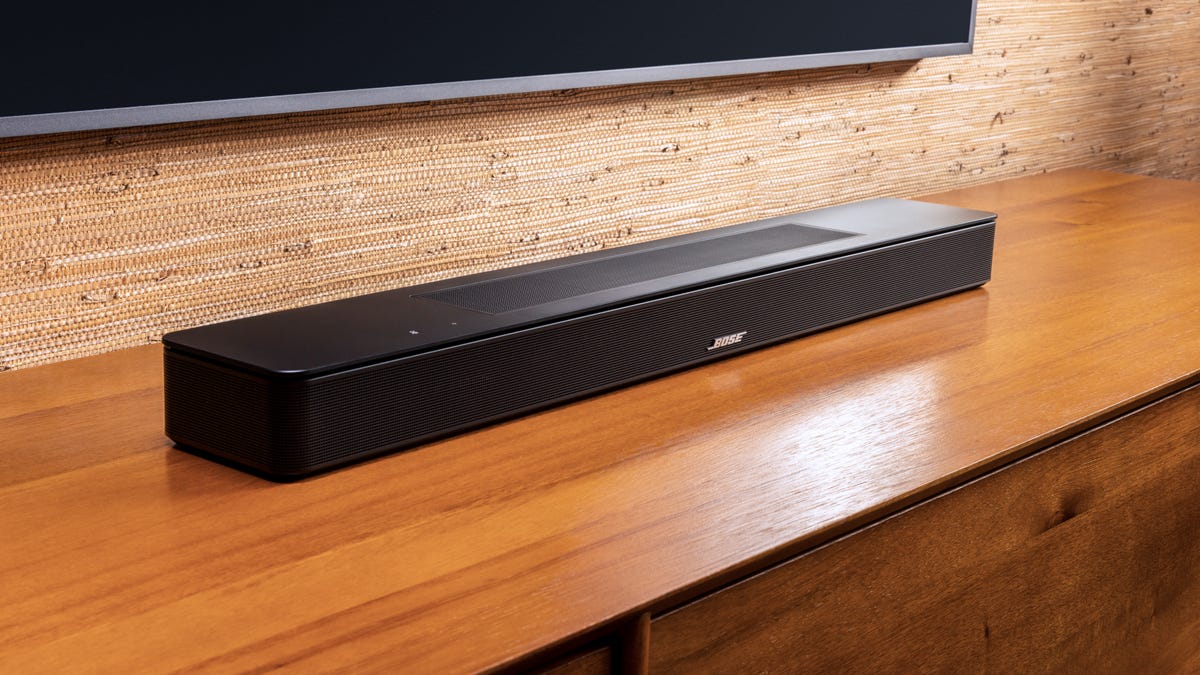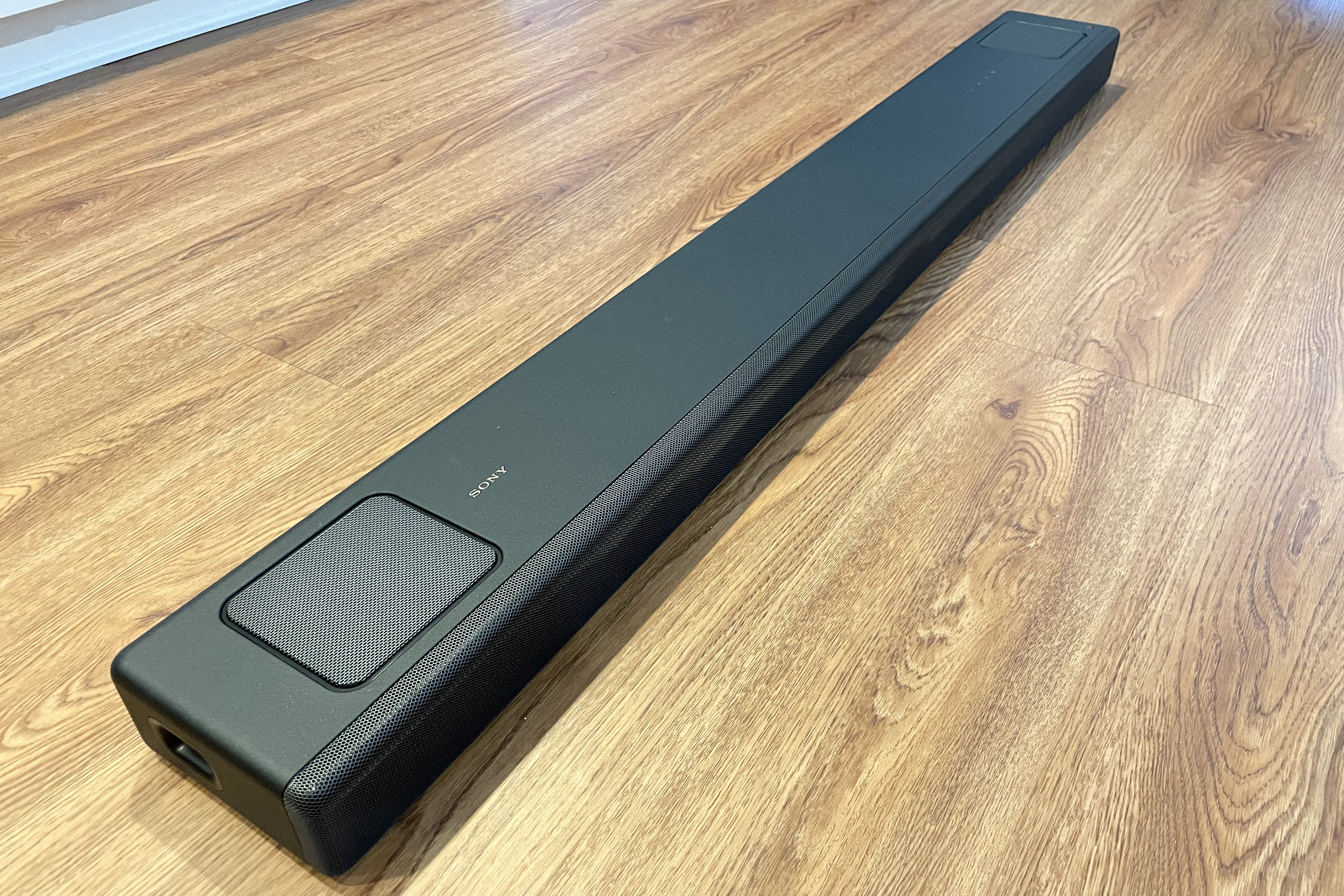Sound Bars Buying Guide – Enhancing Your Audio Experience
Sound bars are a popular choice for enhancing the audio experience of your TV or home theater system. They offer improved sound quality and can create a more immersive audio environment compared to built-in TV speakers. Sound bars have gained immense popularity as a convenient and affordable audio solution for enhancing your TV’s sound quality. If you’re in the market for a sound bar, this comprehensive buying guide will help you make an informed decision. From understanding the benefits of sound bars to exploring key features and considerations, we’ve got you covered.

Sound Bars Buying Guide: Exploring the Basics
What are Sound Bars? Why Should You Consider Them?
Sound bars are slim, elongated speakers that are designed to improve the audio quality of your television. They provide an immersive sound experience by amplifying and enhancing the sound output, making dialogue clearer and adding depth to music and movie soundtracks. Compared to traditional bulky speaker systems, sound bars are space-efficient and offer a hassle-free setup.
Benefits of Sound Bars
1. Space-Saving Design
One of the significant advantages of sound bars is their sleek and compact design. Unlike traditional surround sound systems, sound bars can be easily mounted on the wall or placed on a TV stand, saving valuable space in your living room.
2. Easy Setup and Installation
Setting up a sound bar is a breeze. Most models come with a single cable connection to your TV, eliminating the need for multiple wires and complex configurations. You can enjoy an enhanced audio experience within minutes, without the hassle of a complicated installation process.
3. Improved Audio Quality
Sound bars utilize advanced audio technologies, such as Dolby Atmos and DTS:X, to create a surround sound effect without the need for additional speakers. These technologies provide a more immersive and realistic audio experience, bringing movies, music, and games to life.
4. Versatility and Connectivity
Sound bars offer various connectivity options, allowing you to connect your TV, gaming console, Blu-ray player, or streaming devices seamlessly. With built-in Bluetooth or Wi-Fi capabilities, you can also wirelessly stream your favorite music directly from your smartphone or tablet.
There are two types of audio devices that can enhance your TV’s sound: sound bars and sound bases. Both serve the same purpose of improving the audio quality by providing clearer dialogue, richer sound, and a more immersive experience, akin to a cinematic feel. Whether it’s the subtle chirping of crickets or the thunderous roar of The Hulk, these devices deliver an enhanced audio experience that can make you feel fully engaged.
What Exactly is a Sound Bar?
A sound bar is a long, slender rectangular-shaped device filled with speakers and advanced technology. A high-quality sound bar can do for the spoken word what a pair of glasses does for vision, making voices crisp and distinct. With a good sound bar, you no longer have to rely on subtitles or raise the volume to understand whispered dialogue. Additionally, due to their wider design compared to sound bases, sound bars project sound further to the left and right, offering a slightly more immersive experience akin to a real home theater effect.
In terms of placement, sound bars can either be mounted on the wall beneath your TV, positioned in front of your TV if it’s on a table, or placed on a shelf below or above your TV if it’s part of a shelving system. Many sound bars now come bundled with a separate wireless subwoofer, providing an extra punch to enhance the overall audio experience.

Sound Bars and Sound Bases
Sound bases share the same objective as sound bars—to make your TV sound amazing—but they differ in size and power. Sound bases are deeper from front to back than sound bars but generally shorter from side to side. They are primarily designed to sit directly beneath your TV or on a shelf below it. Sound bases usually have more internal space compared to sound bars, allowing for better built-in amplification and larger bass drivers, which can reduce the need for an additional subwoofer, although a good standalone subwoofer is hard to beat.
However, sound bases are becoming less common as sound bar technology advances. The versatility offered by sound bars, combined with their representation from some of the best brands in the market, often leads us to recommend a sound bar over a sound base.
In summary, both sound bars and sound bases can significantly enhance your TV’s audio experience. Sound bars offer a slim profile, wider sound projection, and often come with a separate subwoofer, while sound bases provide a compact design, improved built-in amplification, and bigger bass drivers. Considering the advancements in sound bar technology and their wider availability from reputable brands, sound bars are usually the preferred choice in today’s market.
Key Features to Consider
When purchasing a sound bar, it’s essential to understand the key features that can significantly impact your audio experience. Consider the following factors before making a decision:
- Audio Quality: One of the most important factors to consider is the audio quality of the sound bar. Look for sound bars that provide clear, balanced sound with good frequency response. Consider the power output, speaker configuration, and any additional audio technologies like Dolby Atmos or DTS:X for a more immersive experience.
- Size and Design: Consider the size and design of the sound bar to ensure it fits well with your TV or home theater setup. Measure the available space and choose a sound bar that matches the width of your TV or is slightly smaller for a balanced look. Additionally, consider the design and aesthetics to ensure it complements your overall decor.
- Connectivity Options: Check the connectivity options available on the sound bar. Most sound bars offer HDMI, optical, or Bluetooth connectivity. HDMI is ideal for connecting to your TV or other HDMI-enabled devices, while optical connections are useful if your TV has limited connectivity options. Bluetooth connectivity allows you to wirelessly stream audio from your mobile devices.
- Subwoofer: A subwoofer enhances the low-frequency audio, providing deeper and richer bass. Some sound bars come with a separate wireless subwoofer, while others have an integrated subwoofer. Consider whether you want a separate subwoofer for a more robust bass experience or prefer a sound bar with built-in bass capabilities.
- Channels and Surround Sound: Sound bars are available in various channel configurations, such as 2.0, 2.1, 5.1, or even 7.1. The first number indicates the number of main channels, while the second number represents the presence of a subwoofer. Higher channel numbers generally offer more immersive surround sound experiences, especially if you have a spacious room.
- Virtual Surround Sound: Some sound bars use virtual surround sound technologies to simulate a surround sound experience without the need for multiple speakers placed around the room. These technologies aim to create a wider soundstage and give the impression of audio coming from different directions. Look for sound bars with features like virtual surround sound or Dolby Atmos for a more immersive experience.
- Control and Convenience: Consider the control options available with the sound bar. Many sound bars come with remote controls, but some can also be controlled through smartphone apps or integrated voice assistants like Amazon Alexa or Google Assistant. Choose a sound bar with control options that suit your preferences and ease of use.
- Price and Value: Set a budget for your sound bar purchase, and consider the overall value you’re getting for the price. Higher-end models may offer more advanced features and better sound quality, but they may also come at a higher price. Evaluate your needs and prioritize the features that are most important to you.
- Reviews and Recommendations: Before making a final decision, read reviews and seek recommendations from trusted sources or people who have already purchased the sound bar you’re considering. Reviews can provide valuable insights into the performance, reliability, and user experience of different models.
- Brand and Warranty: Consider the reputation of the brand and the warranty provided by the manufacturer. Established and reputable brands often offer better customer support and reliable product warranties, ensuring you have peace of mind in case of any issues.
Types of sound bars: Active and Passive.

Understanding the difference between them is important when considering your audio setup.
Passive sound bars do not have a built-in power amplifier, which means they require a separate receiver or amplifier to function. However, they often come equipped with better quality speakers, resulting in superior sound performance. As a consequence, passive sound bars tend to be slightly more expensive, and you will need to connect multiple components together. If you desire additional bass, you will also need to establish a connection for a traditional subwoofer.
Active sound bars come with built-in amplifiers that power all the components of the sound bar, including the individual left, right, and center speakers. This eliminates the need for an external receiver or amplifier and simplifies the setup process, as you have fewer wires to connect. Active sound bars offer an all-in-one solution with integrated amplification and channel processing.
Our recommendation is as follows: If you’re primarily looking to upgrade your TV’s audio and want a straightforward setup, an active sound bar is the way to go. Active sound bars are convenient, self-contained devices that provide a significant audio boost without the need for additional equipment. On the other hand, passive sound bars are better suited for custom installations, such as when you want the sound bar to blend seamlessly with the TV or when building a comprehensive Dolby Atmos system.
Number Of Channels in Sound Bar
Channels in a sound bar can be thought of as individual sound sources or speakers. In most modern shows and movies, audio is digitally embedded into multiple channels, typically consisting of five channels for surround sound and sometimes more. What sets a sound bar apart from a typical home theater setup is that all these channels or speakers are contained within a single unit.
Let’s break it down:
- 2-channel sound bar: This configuration has two speakers, one for the left and one for the right audio channel.
- 3-channel sound bar: In this setup, you have three speakers—center, right, and left—to enhance the clarity and separation of the audio.
- 5-channel sound bar: This is the standard setup that has been prevalent in home theater systems for nearly two decades. It includes all the five speakers mentioned earlier: center, right, left, and two rear speakers for a more immersive surround sound experience.
- 7-channel sound bar: This configuration takes the 5-channel setup and adds an additional pair of speakers. The extra speakers split the surround and rear channel information into four channels, resulting in a total of seven speakers. This is considered the newest and best standard for enhanced audio.
- Dolby Atmos sound bar: This is an advanced version of the 5- or 7-channel sound bar. It incorporates upward-firing speakers within the sound bar itself, allowing sound to be reflected above you and creating a heightened, three-dimensional soundstage. When you come across channel numbers like 5.1.2 or 7.1.2, the third number represents the Dolby Atmos upward-firing speakers, while the first number denotes the traditional channels, and the second number represents the presence of a subwoofer. Dolby Atmos sound bars work best in rooms with flat ceilings up to 11 feet high and made of hard, reflective materials.
Connectivity Options in Sound Bar
Today’s modern sound bars offer a range of connectivity options to suit different needs. Here are some key connections to consider:
HDMI ARC: One of the easiest and most convenient options is to connect your sound bar to your TV’s audio return channel (ARC) input using an HDMI cable. This allows for seamless audio transfer between the TV and sound bar. HDMI is especially beneficial for multi-channel sound bars.
Wireless Connectivity: Look for sound bars that offer wireless connectivity options for added convenience and versatility:
- Bluetooth: Many sound bars come with built-in Bluetooth, enabling you to stream audio directly from your computer, smartphone, or tablet wirelessly.
- Wi-Fi: Wireless sound bars equipped with Wi-Fi can connect to your home’s Internet network, allowing you to stream audio from various online services such as Spotify, TIDAL, Pandora, and more.
Optical Port: An optical port provides a reliable and straightforward connection between your TV and sound bar using an optical patch cord. It is a simple and effective option, although it may not support the bandwidth required for a 5.1 surround sound signal.
USB Inputs: While USB inputs are typically included for firmware updates, most sound bar updates nowadays are done through software updates. Therefore, USB inputs are generally unnecessary unless you specifically want to connect a thumb drive with your own music files.
In summary, when choosing a sound bar, consider the connectivity options that best suit your requirements. HDMI ARC provides a seamless connection, wireless options like Bluetooth and Wi-Fi enable convenient audio streaming, the optical port offers a reliable connection, and USB inputs may be useful for firmware updates or specific use cases.
Frequently Asked Questions (FAQs)
Q. Are sound bars a worthwhile investment?
Many people opt for sound bars because they lack the space required for a full home theater surround sound system. Sound bars are slim and compact, making them convenient space-saving options. Traditional home theater sound setups usually involve a separate amplifier, a minimum of 5 speakers (including a center, left, and right speaker, as well as two rear speakers), and a subwoofer. These components typically cost more than a standalone sound bar.
The key point is this: if you have both the space and the budget, it’s worth considering an authentic home theater sound system because it offers an incredible audio experience in various aspects. To put it simply, if a good sound bar enhances your TV audio by 100 times, a genuine home theater setup improves your TV audio—and the overall viewing experience—by a staggering 10,000 times. However, if you’re seeking a straightforward solution, a sound bar will undoubtedly provide a significant improvement over your TV’s built-in audio.
Q1: Can I use a sound bar with any TV?
Yes, sound bars are compatible with most TVs. They can be connected using various options like HDMI, optical, or Bluetooth, making them versatile and suitable for any television model.
Q2: Can a sound bar replace a full surround sound system?
While a sound bar can provide an immersive audio experience, it may not completely replicate the surround sound effect of a full speaker setup. However, sound bars offer a practical and space-saving alternative with impressive audio performance.
Q3: What is the ideal sound bar size for my TV?
The sound bar size should be proportional to the size of your TV. As a general rule, a sound bar that matches the width of your TV or is slightly smaller is a good choice. This ensures a balanced and aesthetically pleasing setup.
Q4: Can I mount a sound bar on the wall?
Yes, many sound bars come with wall-mounting options. Ensure that the sound bar you choose provides a mounting kit or has a built-in mounting mechanism for easy and secure installation.
Q5: Do sound bars support wireless connectivity?
Yes, most modern sound bars offer wireless connectivity options such as Bluetooth or Wi-Fi. This enables you to stream music wirelessly from your smartphone or other devices, providing convenience and flexibility.
Q6: Are sound bars compatible with streaming services and smart assistants?
Many sound bars now come with built-in streaming service apps and voice assistants like Amazon Alexa or Google Assistant. This allows you to control your sound bar using voice commands and enjoy seamless access to your favorite streaming services.
Conclusion
Investing in a sound bar can significantly enhance your audio experience while watching movies, playing games, or listening to music. By considering the key features, understanding the benefits, and exploring the frequently asked questions, you’re now equipped with the knowledge needed to choose the right sound bar for your entertainment setup. So, go ahead and bring the immersive sound experience into your home with a high-quality sound bar.
Remember to assess your specific requirements, room size, and budget before making a purchase. By considering these factors, you can find a sound bar that meets your needs and enhances your audio experience.

